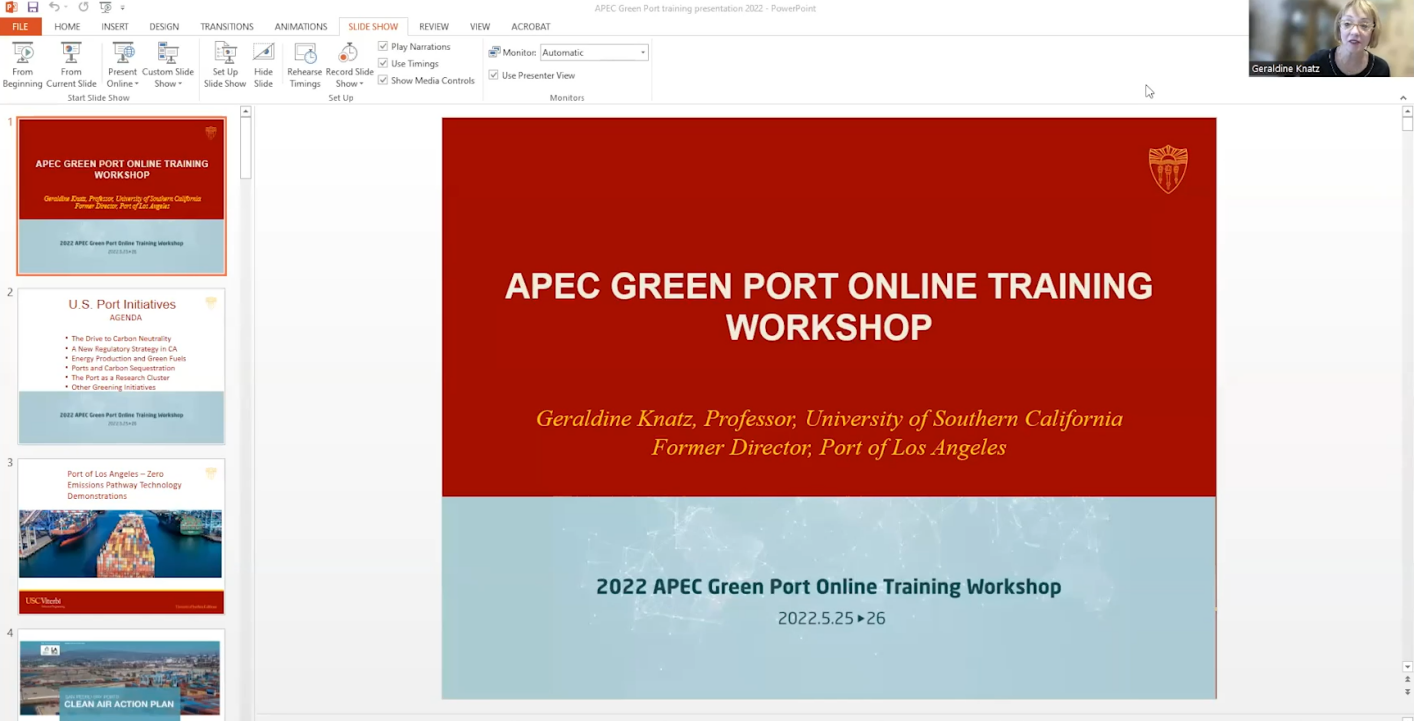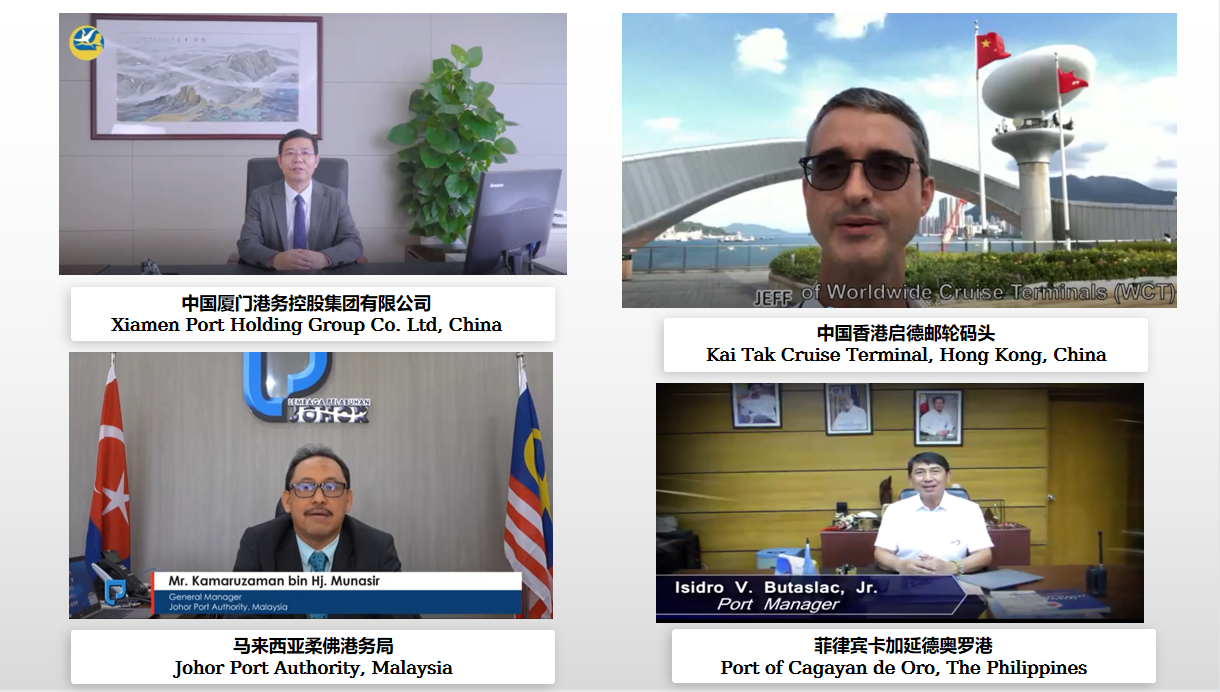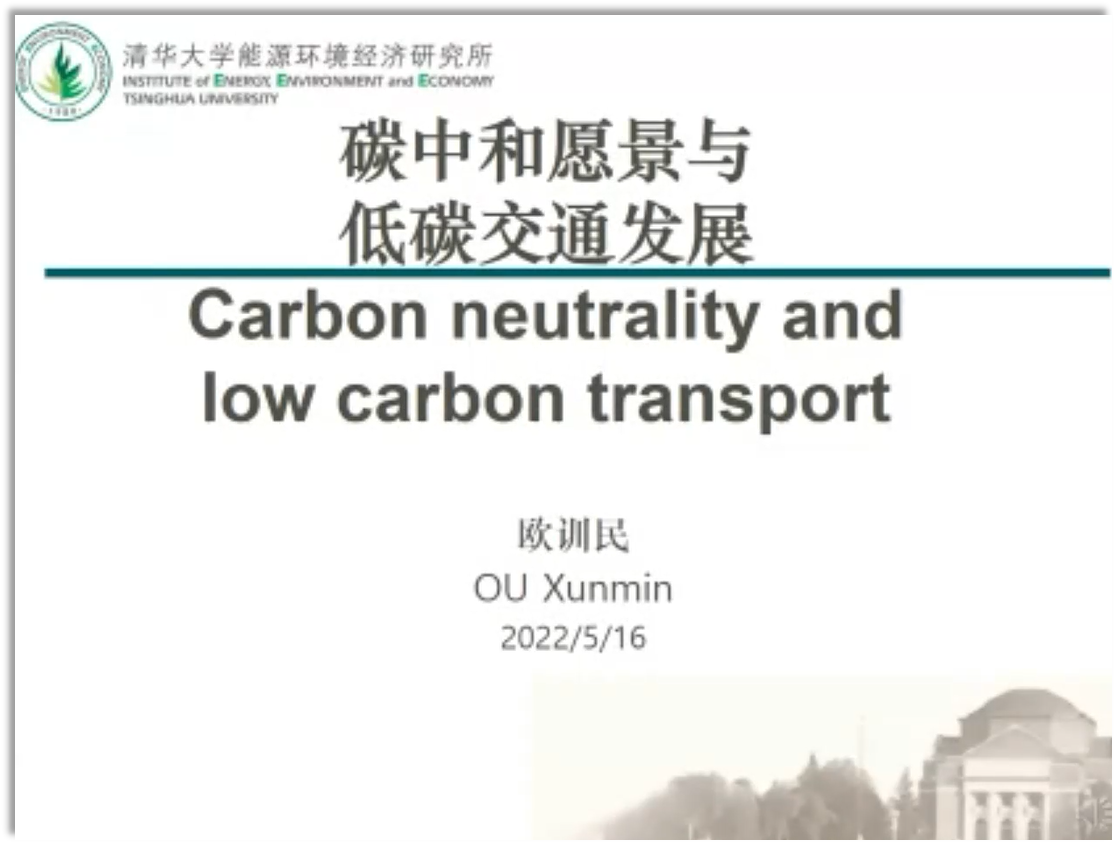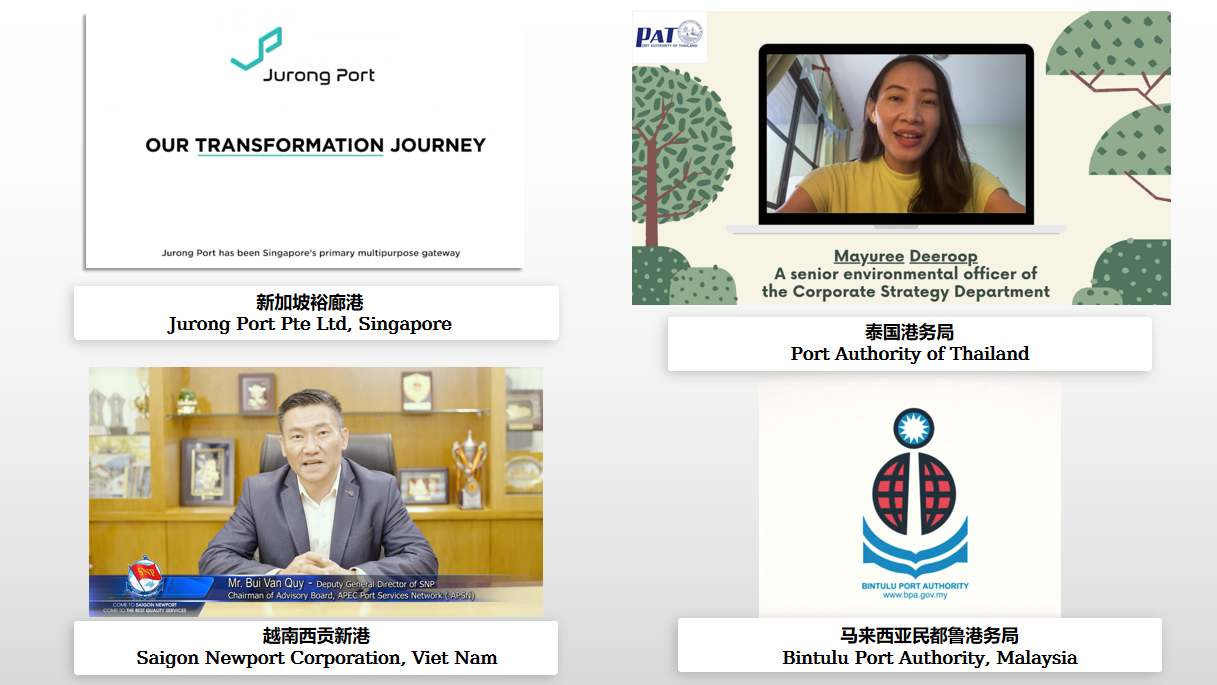
The 2022 APEC Green Port Online Training Workshop was held successfully on May 25 and 26, 2022. The training workshop was hosted by the APEC Port Services Network (APSN).
About 200 participants from 10 APEC economies attended the 2-day training workshop, including China; Hong Kong, China; Indonesia; Japan; Malaysia; the Philippines; Singapore; Thailand; the United States and Viet Nam.

The training workshop was moderated by Mr. Cai Ouchen, Deputy Director, APEC Port Study Center of APSN. Mr. Cai thanked all speakers and GPAS Award recipients for sharing their expertise and experience on green port and welcomed all participants to the training workshop.

On May 25, 2022, Dr. Geraldine Knatz, APSN Senior Consultant/ Professor, Practice of Policy and Engineering, University of Southern California/Member of the National Academy of Engineering, shared green development of US ports from the following 5 perspectives: 1) The Drive to Carbon Neutrality of the Port of Los Angeles. Under the requirements and guidance of the San Pedro Bay Ports Clean Air Action Plan (CAAP), the Port of Los Angeles has carried out a great amount of zero-carbon emission technology trials, especially the development and testing of the electrification of cargo-handling equipment and trucks and vehicles and the planning of related infrastructure construction in terms of port-related mobile emission sources. 2) Update on A Regulatory Strategy in California. California has recently imposed the Indirect Source Rule (ISR) for warehouse operators, making it clear that warehouse operators have legal obligations to control and reduce emissions from their own emissions and emissions from all trucks or equipment or other transport vehicles, so as to promote emission control related to cargo storage in California. 3) The Development Trend of Energy Transition. Following the trend of clean energy transition, ports and research institutes in the United States are conducting R&D and even commercial trials of various clean energy production and fuel applications, including liquefied natural gas, hydrogen and tidal energy. 4) The Latest Development of Port Agglomeration R&D Efficiency. A number of U.S. ports are using abandoned sites to attract research institutes to conduct research and experiments related to the blue ocean economy, including renewable energy, ecological conservation and marine aquaculture. 5) The Latest Development of Port Congestion and Related Environmental Issues in California. California's port congestion problem continues to grow, with ships waiting to dock in port waters bringing additional air pollution around ports. In order to solve the port congestion and the resulting environmental problems, ports in California are tracking the data on air pollution which are freely available freely available that has never been available before, and moving the vessels far off the coast.

On May 25, 2022, 4 GPAS Award recipients shared their best practices on developing green ports respectively, including Xiamen Port Holding Group Co. Ltd, China; Kai Tak Cruise Terminal, Hongkong, China; Johor Port Authority, Malaysia; and Port of Cagayan de Oro, the Philippines.

On May 26, 2022, Mr. Xunmin Ou, Associate Professor, Institute of Energy, Environment and Economy, Tsinghua University, made a presentation on “Vision on Carbon Neutrality and Low-Carbon Transport Development”.
Professor Ou first introduced the scientific findings of AR6 organized by the Intergovernmental Panel on Climate Change (IPCC). About 1.1 degree has increased since industry revolution and the trend continues to rise. To fulfill the 2 degree global warming goal, carbon neutrality should be in fact by 2060~2070 globally, while the window period for the 1.5 degree global warming goal is 2050 to 2060. The potential for high economic growth with low emissions exists in all regions of the world, but the current budget for emissions control is limited and current policies are not strong enough to meet the 1.5 degree or even 2 degree warming goals.
Regarding the emissions in the transport sector, the AR 6 pointed out that the transport sector emitted about 15% of total GHG emissions globally for the year 2019; and in order to support the realization of 2 or 1.5 degree global warming goal, the transport sector must decrease the GHG emissions in the future. Road transport accounts for 70% of carbon emissions in the transport sector, but carbon emissions from waterways and aviation are rising rapidly. By region, transport emissions in developing economies will continue to rise. In order to promote carbon emission reduction in transportation, it is of great importance to promote the electrification of lightweight vehicles in highway transportation. Sustainable biomass fuels, low Carbon/zero hydrocarbon energy and derived fuels could contribute to carbon reduction in water transport, aviation and heavy transport vehicles in the future, but it will take some time to develop and commercialize these technologies.
Professor Ou finally briefly introduced the development trend of low-carbon transportation in China. In the past two decades, with the substantial growth of transportation volume in China, energy consumption and carbon emissions in the industry have increased rapidly, accounting for about 10% of the whole industry in 2018. In the future, the rapid growth trend of carbon emissions in China's transportation industry can be reversed through transportation modal optimization, innovative technology research and development and zero-carbon energy transition, and the whole industry will achieve carbon neutrality by 2060.

On May 26, 2022, 4 more GPAS Award recipients shared their best practices on developing green ports respectively, including Jurong Port Pte Ltd, Singapore; Port Authority of Thailand; Bintulu Port Authority, Malaysia; and Saigon Newport Corporation, Viet Nam.
The training workshop provided knowledge and technical support on the green development so as to enhance participants’ understanding on policies, technologies, as well as the global dynamics and trends for the green growth of the port industry. The APSN Secretariat will compile the best practices of the GPAS award recipients and share them with all APSN members and APSN Green Ports in the future. The APSN welcomes more ports and port authorities to join the GPAS program and other upcoming APSN events and activities in 2022.

